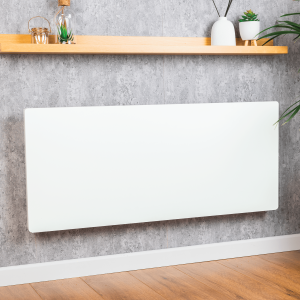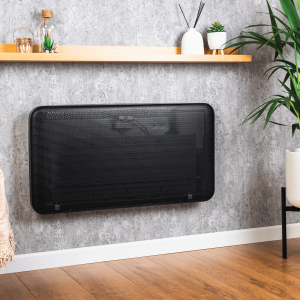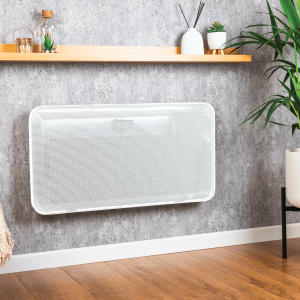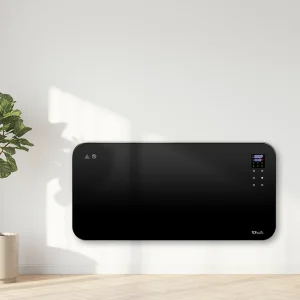
Infrared heating panels (also known as IR panels or infrared heaters) are gaining popularity as an alternative heating method to conventional heating systems. They promise energy efficiency, modern aesthetics, and targeted warmth, making them an appealing option for many homeowners. However, as with any technology, there are important pros and cons to consider before making an investment in an infrared heating system. In this article, we explore the potential disadvantages of infrared heating panels to help you make an informed decision.
One of the first things to consider with infrared heating panels is the initial financial outlay. While they can be more energy-efficient in the long run, the upfront costs may come as a surprise, particularly if you’re switching from an existing heating system. High-quality panels, which provide better efficiency and longer lifespan, tend to be more expensive than budget alternatives.
Moreover, the number of panels required to heat your home effectively depends on the size and layout of each room. For larger spaces or homes with multiple rooms, this can mean buying several panels, which quickly adds up.
In addition, professional installation is often recommended — especially if you opt for ceiling-mounted panels or want them wired into the mains. Hiring a qualified electrician adds to the cost, making the overall installation more expensive than simply replacing a radiator or plugging in a portable heater.
Infrared heating panels work very differently to traditional heating systems. Rather than warming the air, they emit infrared radiation that heats objects and people directly. While this can be more efficient in targeted situations, it also creates limitations.
The heat is line-of-sight, meaning anything blocking the path of the panel — furniture, curtains, partitions — can prevent the warmth from reaching certain areas. This can result in cold spots if the room layout is not ideal. For example, an open-plan living room may heat nicely, but a cluttered bedroom or an oddly shaped kitchen may not enjoy the same consistent warmth unless multiple panels are used or careful positioning is done.
In rooms with high ceilings or complex geometry, some zones may never receive direct infrared radiation, leaving parts of the room feeling cooler.

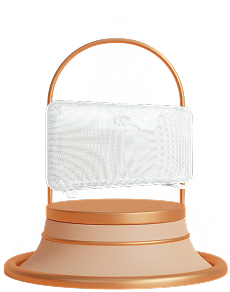
A common misconception is that once the panel is turned off, the room will stay warm for a prolonged period — but this is often not the case. Since infrared panels do not heat the air, the ambient temperature of the room drops rapidly once they’re switched off.
By contrast, with traditional systems that heat the air (such as gas central heating or radiators), warmth lingers as the air itself retains heat for a while, which is a significant advantage of those systems.
In practice, this means you may need to run infrared panels more frequently or for longer durations in order to maintain a comfortable level of warmth. For homes with poor insulation, this can reduce the efficiency gains that initially attract many people to this technology.
The issue was briefly mentioned above. To function effectively, infrared heating panels require a well-insulated environment. This is because while the panels heat surfaces and people, poor insulation means that walls, floors, and ceilings may lose that absorbed heat quickly — and any draughts will further accelerate this loss.
In older properties, or those with single glazing, uninsulated lofts, or poorly sealed doors, the performance of infrared panels can be disappointing. Without addressing these weaknesses first, you may find yourself running the panels longer, thereby increasing electricity usage and negating any cost savings.
In some cases, property owners find they must first invest in upgrading insulation — which adds another layer of cost and time to the transition to infrared heating.
While infrared panels can be attractive — with options such as frameless glass panels, mirrored designs, and custom prints — their functional requirements can create design challenges. For optimal performance, they must have a clear path to the room occupants and be unobstructed by furniture or decor.
This means you’ll need to plan your room layout carefully to accommodate them. Large pieces of furniture like wardrobes, shelving units, or even a sofa can block the heat if positioned directly in front of a panel. Ceiling-mounted panels can reduce this issue, but may not suit the aesthetic of every room.
In period properties, or in homes where the décor is more traditional, it can sometimes be difficult to integrate modern-looking infrared panels in a visually harmonious way.
Finally, achieving effective and consistent heating with infrared panels requires thorough planning — far more so than simply installing a few radiators. Factors such as panel size, wattage, mounting height, angle, and placement must all be considered to ensure even warmth throughout the room.
Without expert advice or careful research, it’s easy to install panels incorrectly. Poor placement can result in cold zones, particularly in rooms with alcoves, varying ceiling heights, or lots of soft furnishings.
Additionally, homeowners must consider usage patterns: some rooms may need continuous background heat (such as living rooms), while others (like bedrooms) may only need intermittent heating. Choosing the right control systems — from thermostats to smart timers — adds another layer of complexity.
While infrared heating panels offer several advantages, they are not without their limitations. From higher upfront costs to dependency on insulation and careful planning, these factors may not suit every home or budget. It’s essential to evaluate the pros and cons to determine whether your property and lifestyle are a good fit for this type of heating. By understanding the drawbacks as well as the benefits, you’ll be better equipped to choose the best heating solution for your needs.
